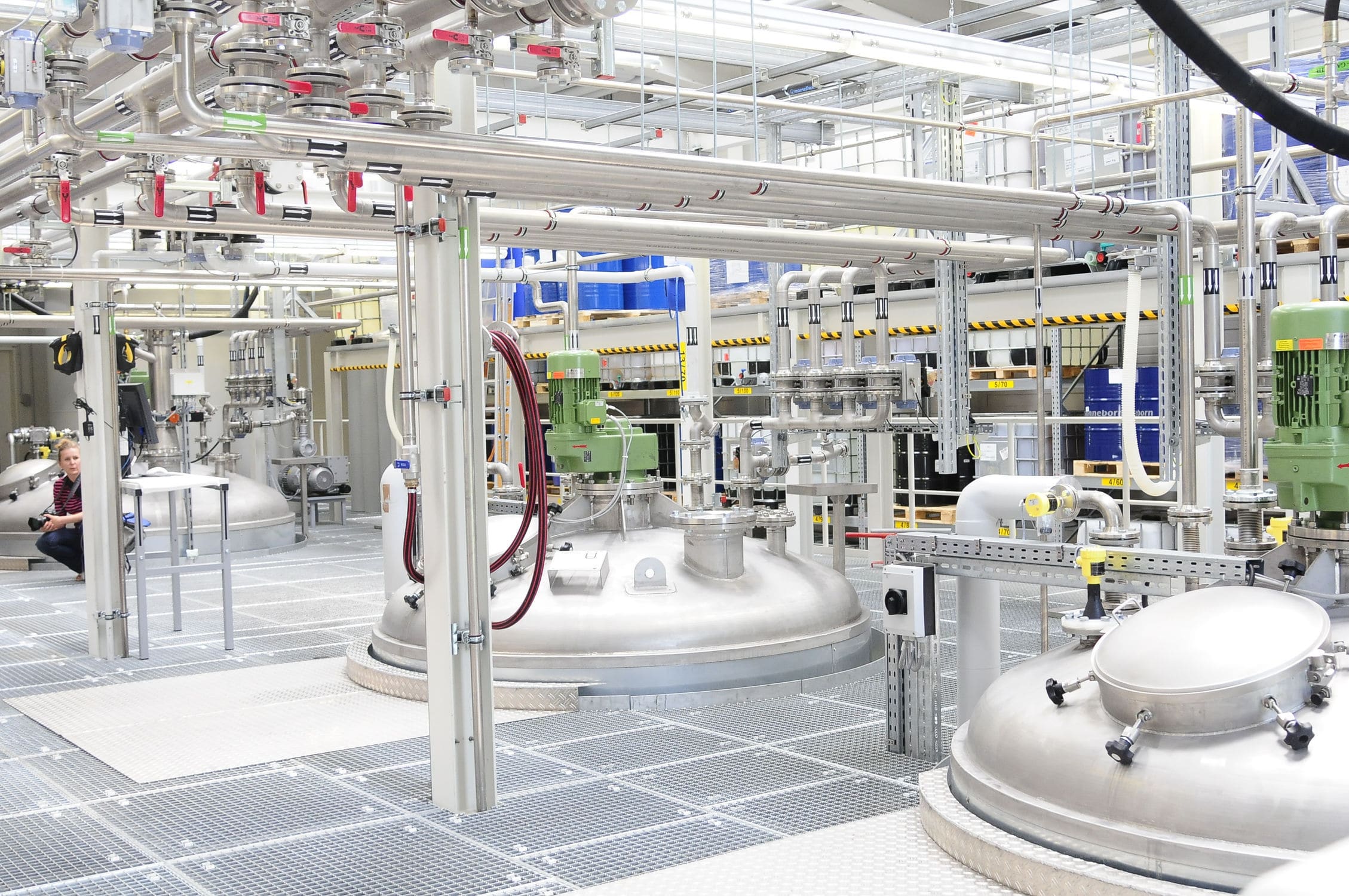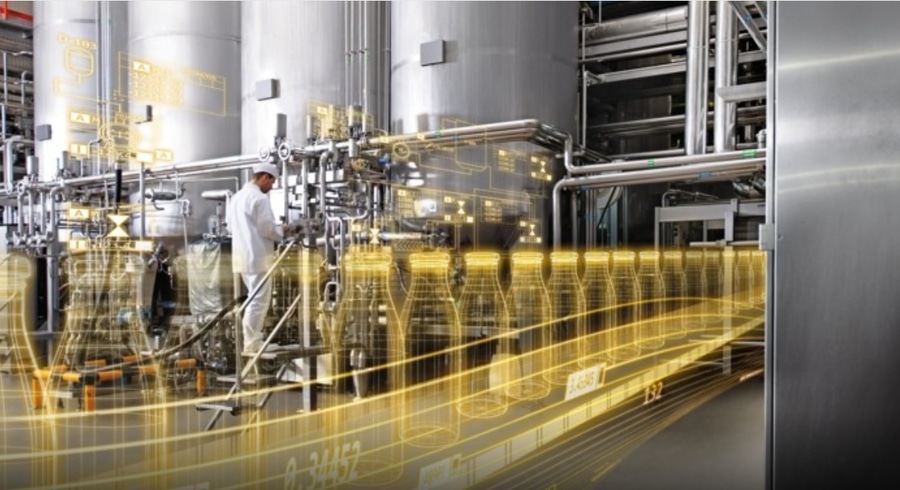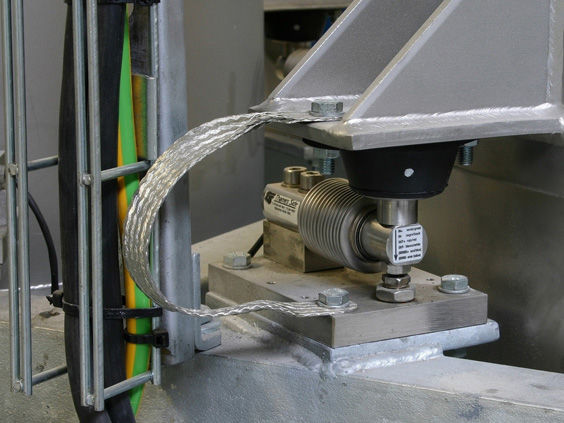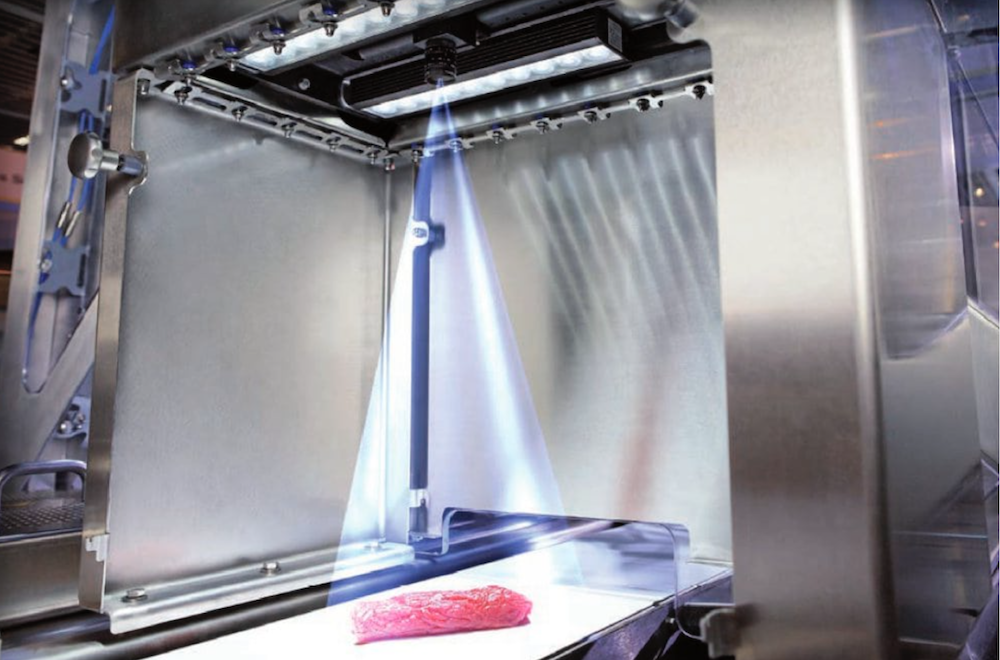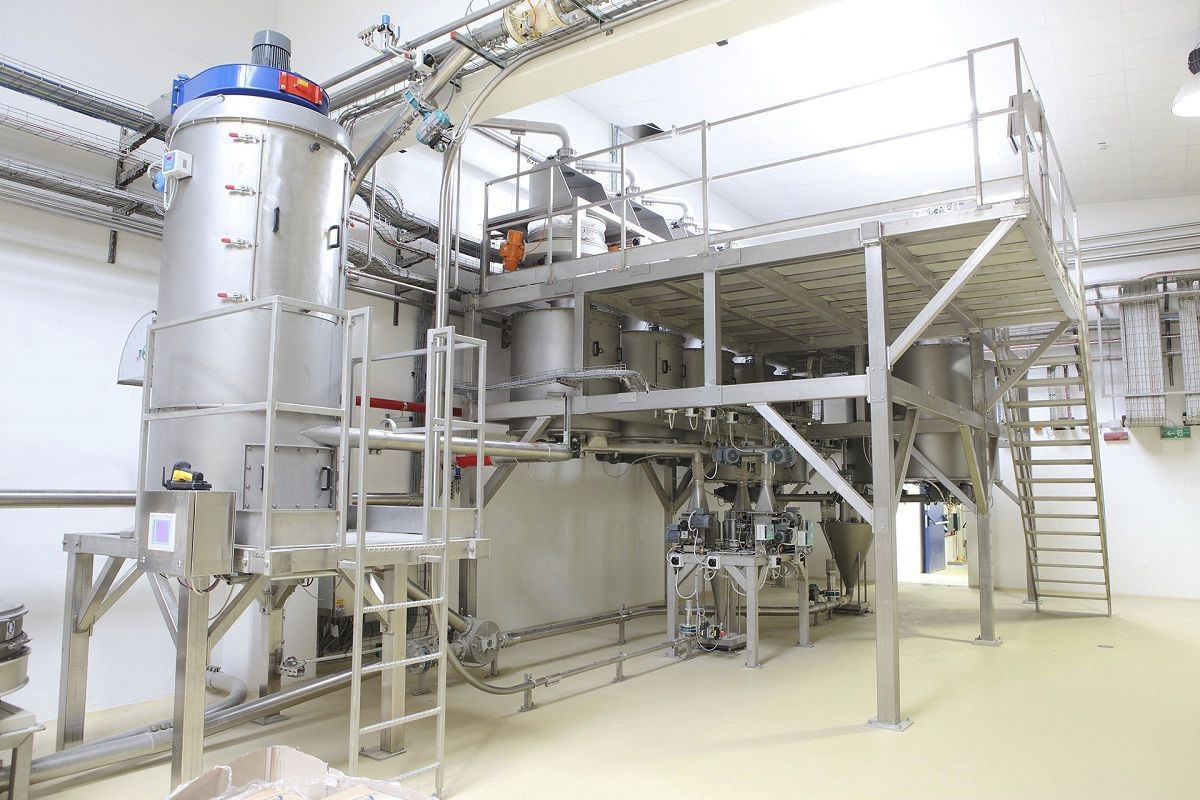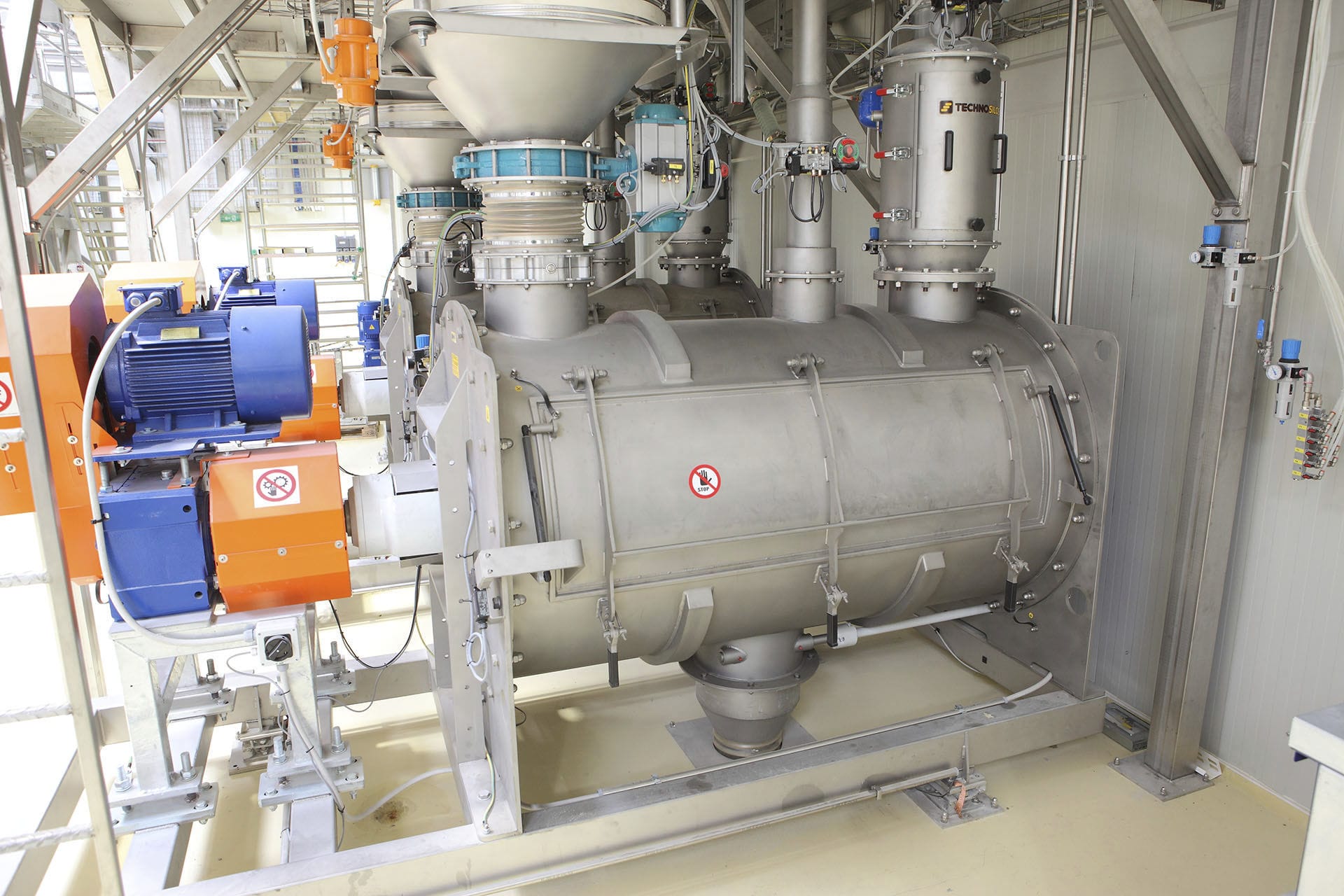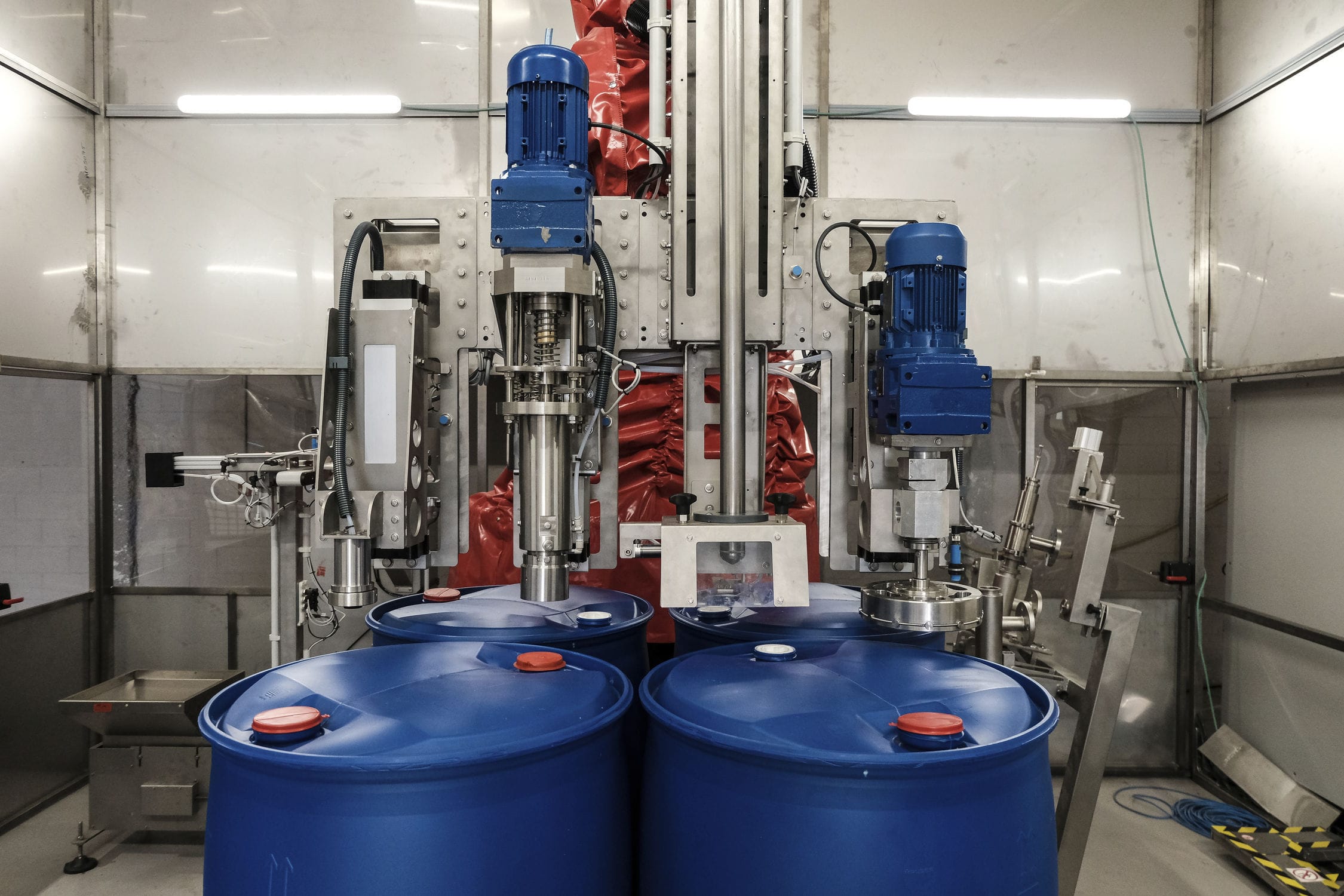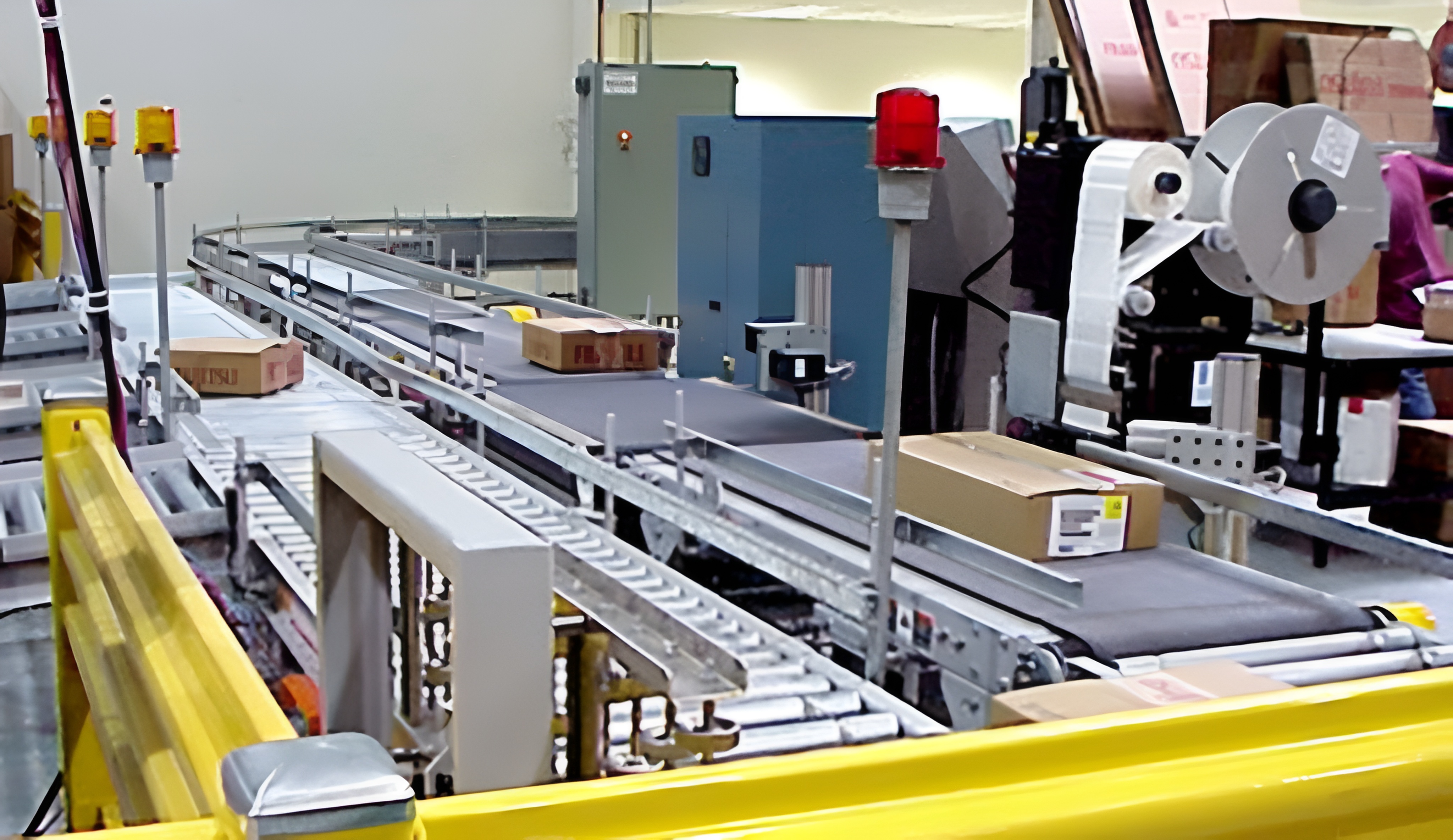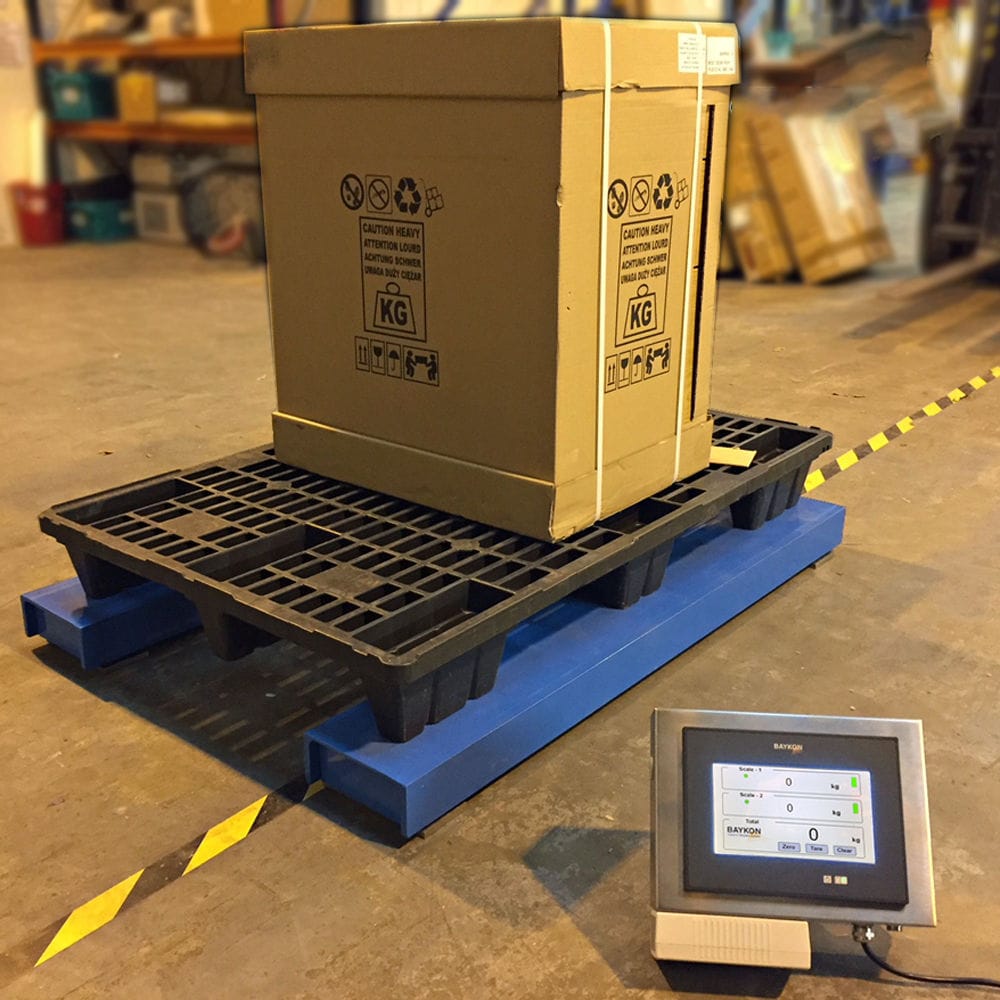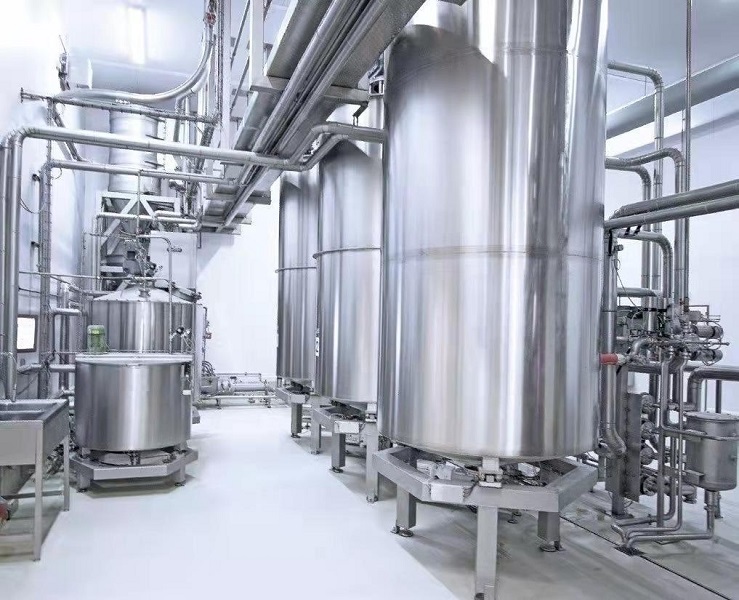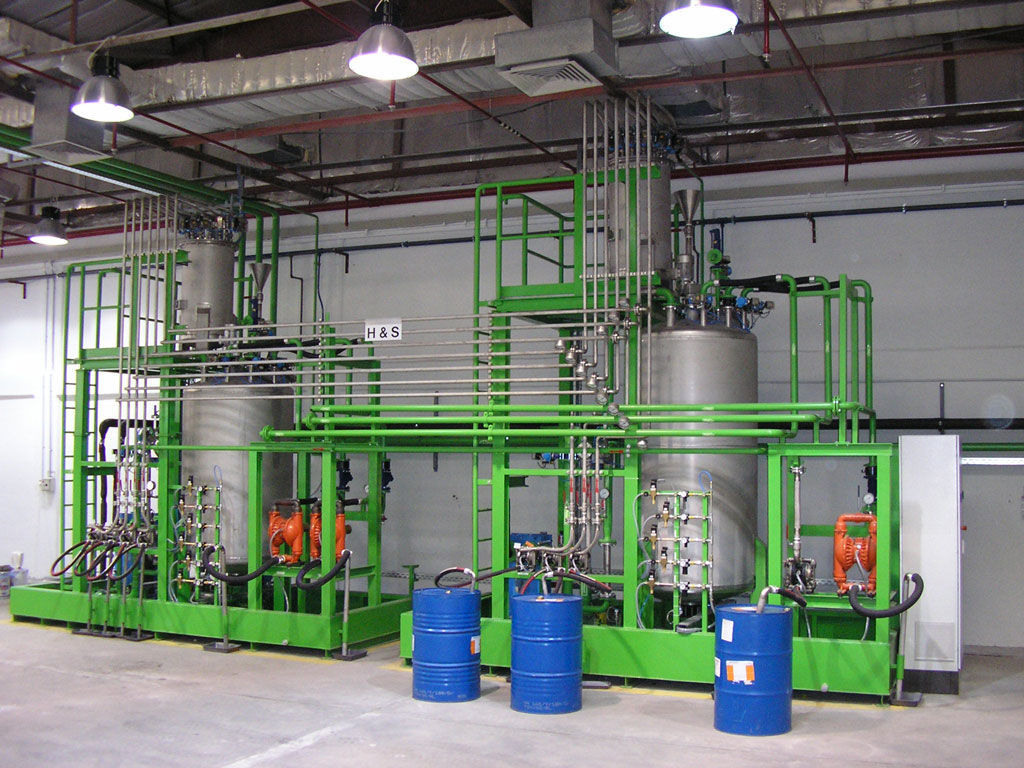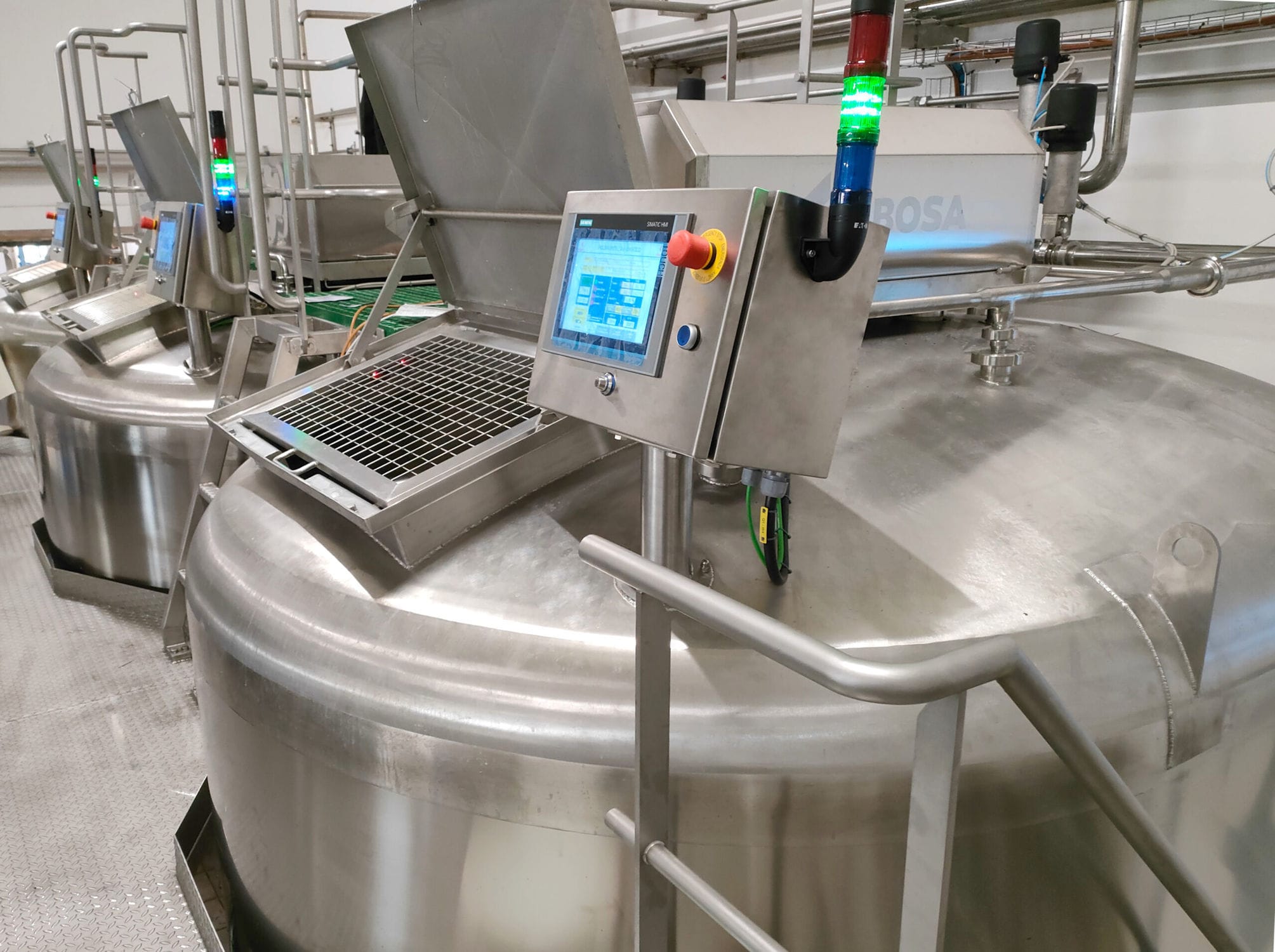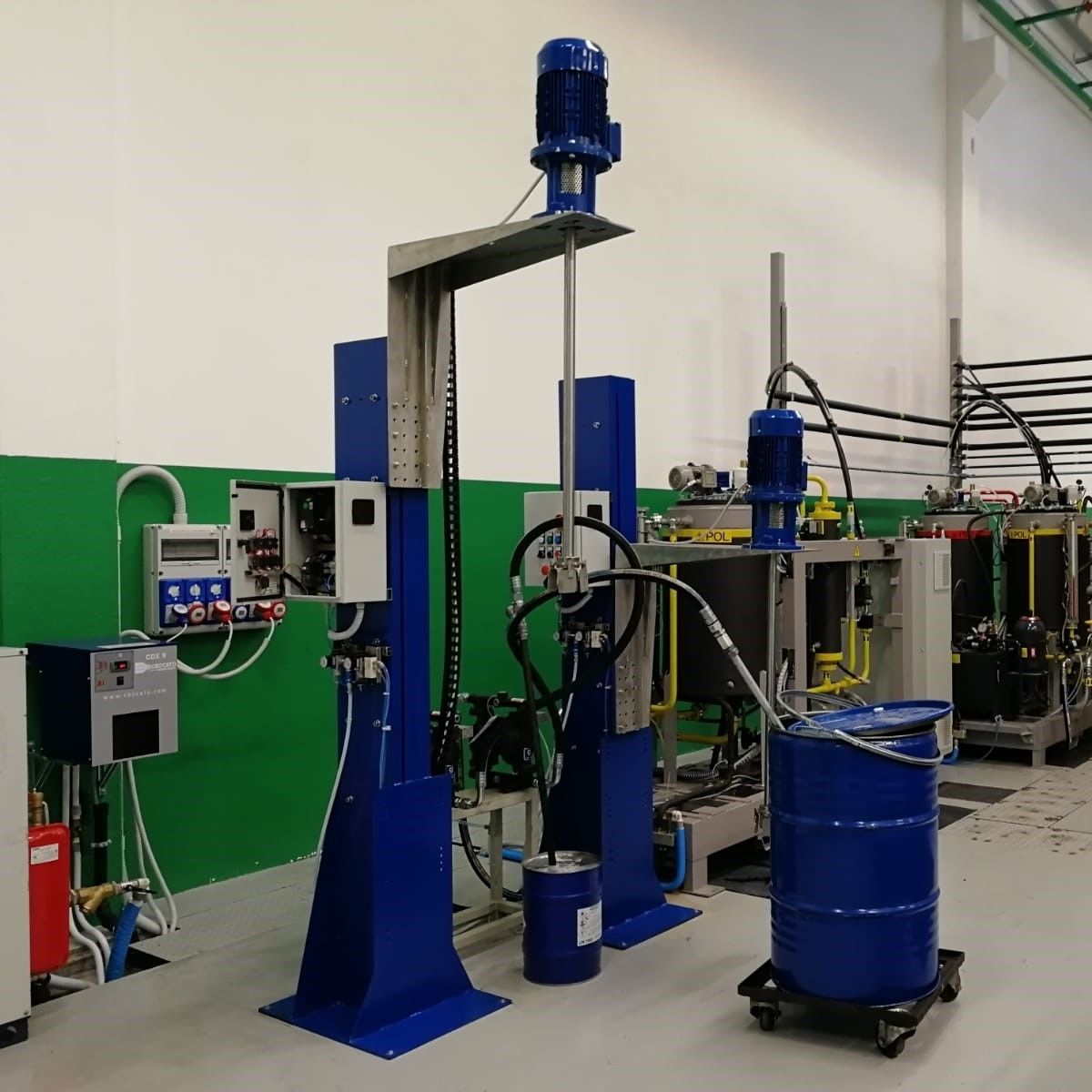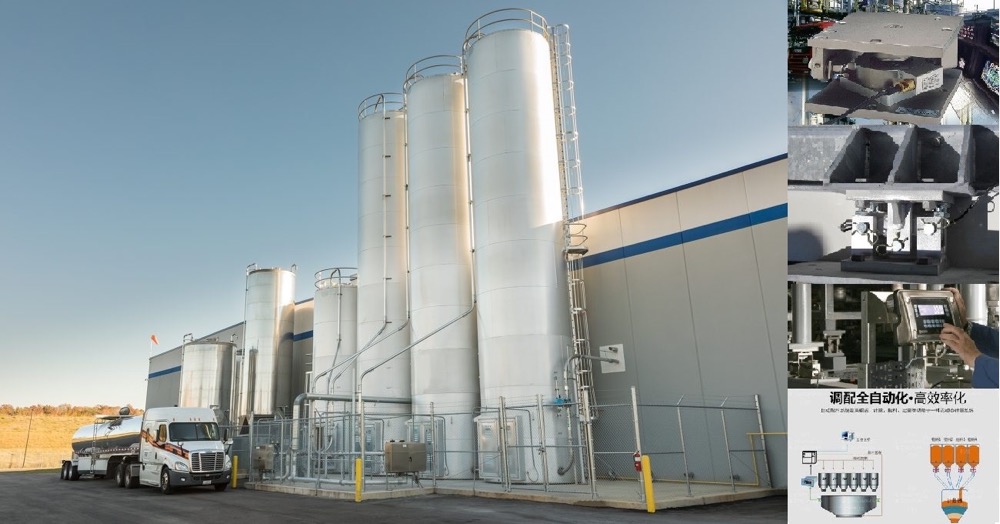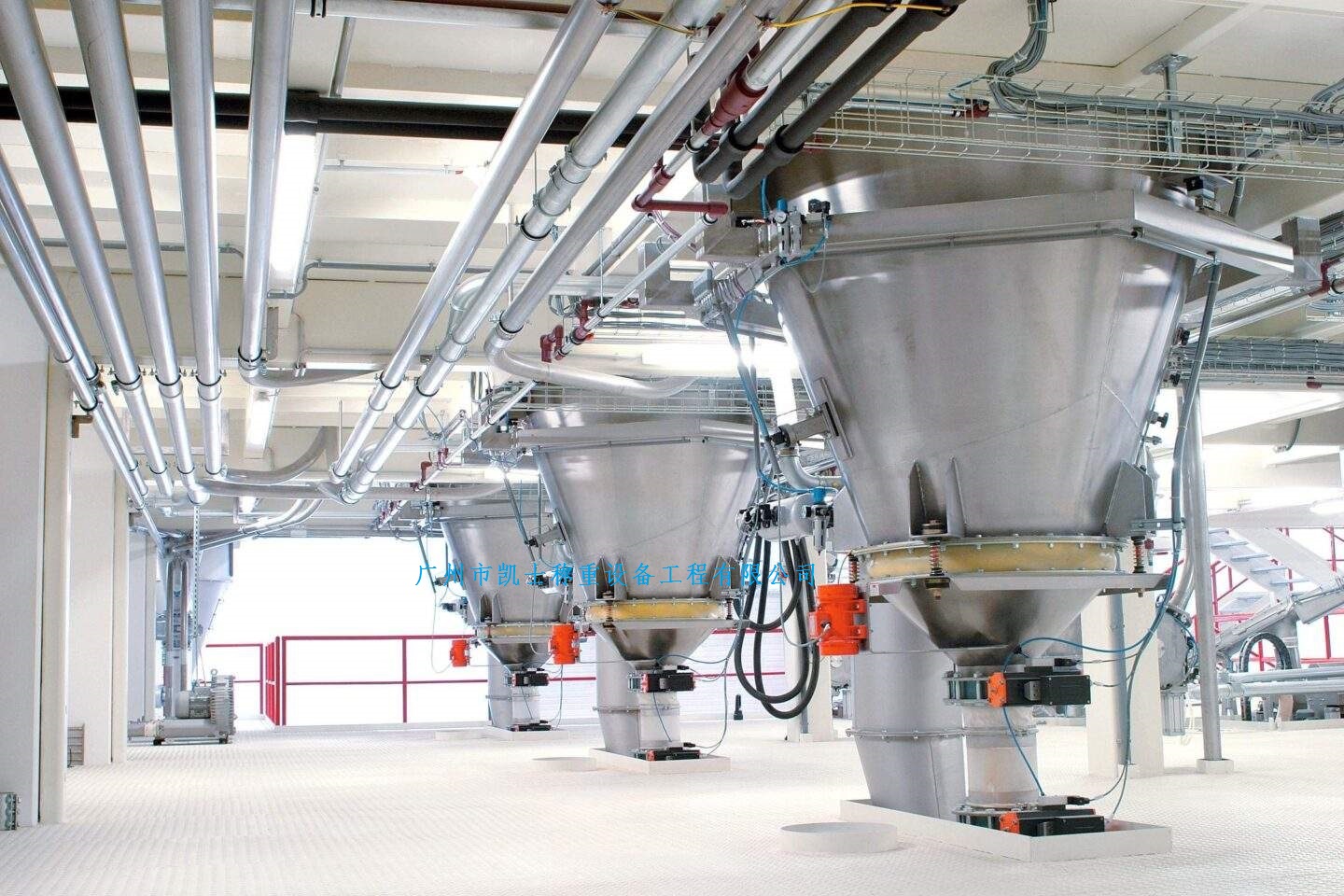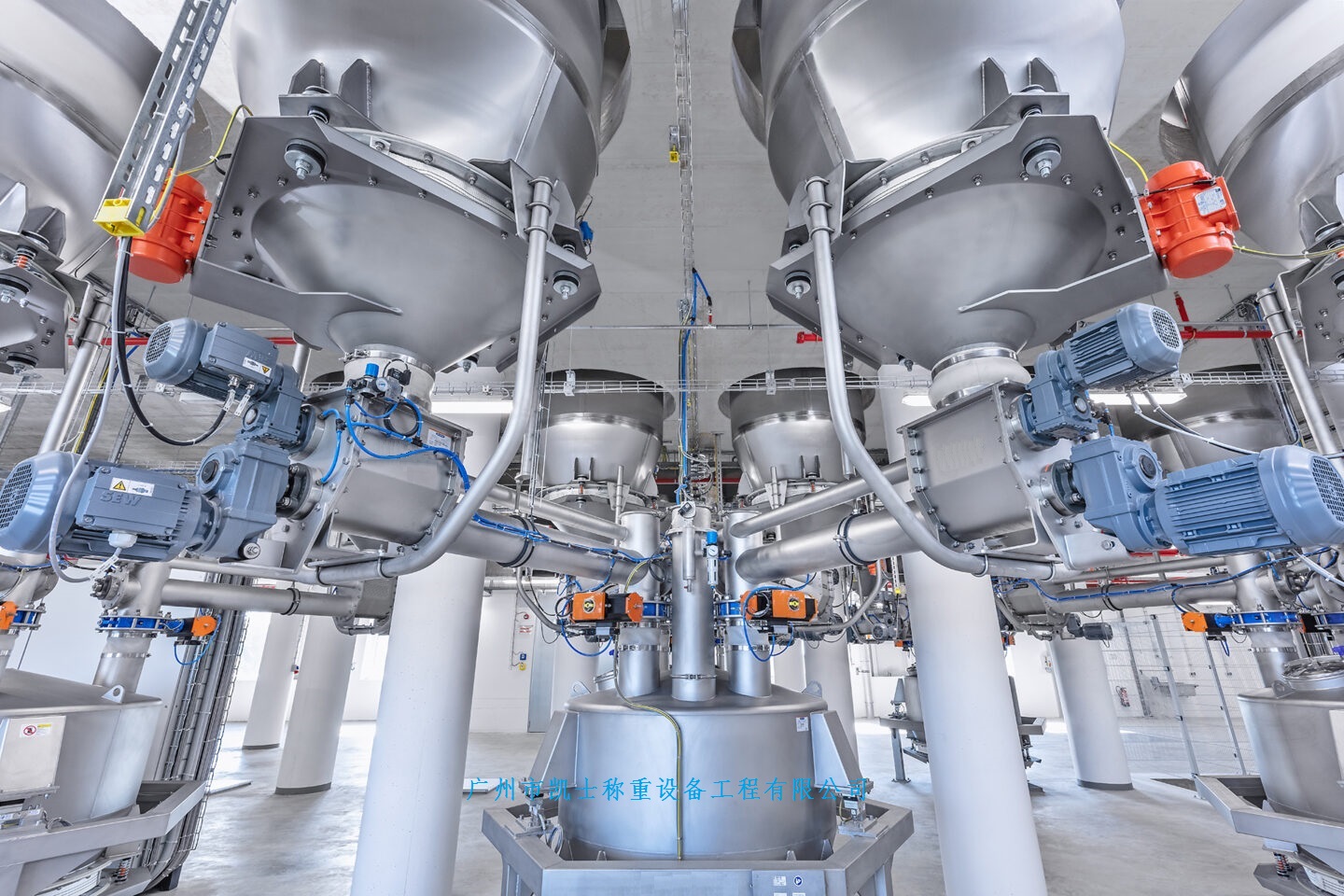

The weighing color matching system receives the formula data sent by the industrial computer, and begins the automatic weighing process. The on-site weighing instrument continuously passes the data into the PLC through the bus, and decides whether to feed at high speed or slow speed according to the real-time weighing. Set the receiving order in the formula, arrange the materials according to the set order, when a material is weighed and the sequence word is in line with the PLC weighing signal, PLC then control the receiving basket to receive the corresponding material; After weighing and unloading, the receiving basket continues to rotate with the turntable to wait for the next material.
 020-34563445
020-34563445The feeding system is controlled by computer, and automatically weighs all kinds of materials according to the pre-set dosing scheme, and automatically controls all aspects of dosing to complete the dosing process. The key to accurate dosing is to control the speed and start and stop of the feeding motor. In the dosing process, according to the amount of feeding, the speed of the motor is controlled. It is divided into different feeding modes such as high speed feeding and low speed feeding, which can improve the working efficiency of the system and improve the accuracy of dosing. When the difference between actual feeding and set value is large, the batching accuracy of the Batching system can meet the requirements.
According to the requirements of the process formula, the weighing operation of the Electronic scale is carried out. As the upper computer, the industrial computer (fully compatible with the general computer and more adaptable to the harsh industrial environment) is the operating terminal of the human and machine dialogue. The main function is to monitor the operating status of the entire Weighing system based on the electronic scale, issue operation commands to the PLC and calibrate and correct parameters, and adopt the high-speed feeding mode. This can improve the efficiency of the system.
The batching machine is composed of three parts: mechanical, testing and electrical control. The function of the mechanical system is to complete the storage and conveying of the relevant materials, which is mainly composed of the reaction kettle, screw conveyor, hopper, material door switch and so on. The function of the detection part is to weigh various materials in the battering process, which is mainly composed of the scale body, weighing module, etc. The commonly used detection part uses the weighing module. The elastic element converts the weight of the material into a micro-strain signal through the strain gauge, and converts it into an electrical signal through the bridge circuit, and outputs an analog signal proportional to the material quantity value. The accurate weight value corresponding to the electrical signal can be determined by physical calibration or electrical calibration. The role of the electrical control part is to control the batching process, control the conveying, feeding and unloading of materials, mainly by the motor, frequency converter, weighing display and computer. Set the given value of each material according to the allocation ratio, the loading of various materials is controlled by the weighing controller or the computer in sequence, and the loading amount of materials is detected. The rotation speed of the blanking motor is controlled according to the amount of materials set by the system. When the loading amount of materials reaches the set value, the feeding valve of the material is closed, and the batching is finished until all materials are added according to the set loading value.




